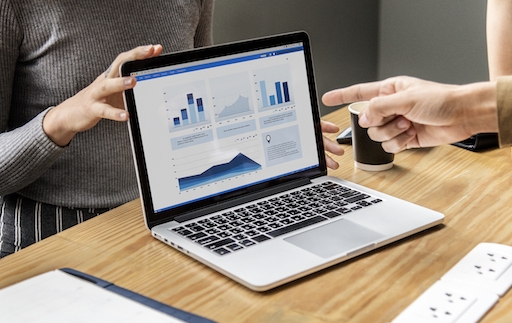
Business photo created by rawpixel.com – www.freepik.com
Ever since the first photographs were taken in the 1800s, people have been influenced by the power of mechanically captured images. The adage “a picture is worth a thousand words” highlights the importance of visualizing information. What can be understood in a second visually could take minutes to explain verbally. Even after an extremely detailed explanation, the image can still prove more powerful in conveying the intended message.
The ability to use visualization has become a critical factor in enabling humans to understand the incredible amounts of data from which we are expected to make decisions. Big data and analytics have transformed the world of business and commerce forever. Companies that fail to take advantage of the business intelligence afforded by these disciplines can find themselves at a great competitive disadvantage.
Some may argue that numbers are themselves visual when written down. They offer concrete and precise representations of abstract concepts and information but are not always easily understandable by the intended audience. In some cases, this is due to the complexity of the data. In other instances, the presentation may run up against a general fear of numbers that afflicts a substantial percentage of the population. Using visualization allows your information to penetrate these roadblocks to understanding.
Why Data Visualization Works
One of the advantages to visually presenting information is that it reduces the potential that the underlying message will be misunderstood. While the possibility still exists for misinterpretation, displaying data in a visual format almost always provides a more easily understandable method of imparting knowledge.
Portraying data in a visual manner eliminates the language barriers that may exist between the information’s presenter and receiver. A picture can be understood by anyone no matter which language they speak. This fact is not constrained to the differences in the various spoken languages employed by the world’s population. Communication obstacles often exist within organizations. Belonging to different corporate departments or possessing various levels of expertise can pose obstacles to properly expressing information in a fully understandable verbal or written manner.
Technical details that are expressed numerically may be fine for specialists with a deep understanding of the underlying concepts and details. The same presentation can be met with a complete lack of comprehension by very intelligent individuals who do not possess the same intellectual foundation. Through data visualization, complex statistical tables can be presented in a manner that enables disparate groups to grasp their meaning in a glance. Think of the ways that you could turn your databases into eye-catching presentations that enable all stakeholders to participate in the discussion.
Data Visualization in Action
An example of using data visualization to quickly relate a wealth of data with which we interact daily is the familiar weather map. There is no inherent reason why we cannot be presented with tables of barometric pressure, temperature, and wind speed. The accumulated data would be sufficient, once it was properly digested, to mentally paint the same picture of the weather as does the map in your favorite app. That is if you knew how.
We are drawn to the map and almost immediately process the data measurements and predictions visually. In an instant, we gain more knowledge about the weather than we would have from studying the numbers for hours. The viewer of this visualization reaps all of the benefits of the underlying data without needing to understand meteorology at all. Data visualization provides a perfect depiction of the information tailored to the needs and expectations of the audience. Employing this strategy when presenting your data can dramatically increase its value.
The National Aeronautics and Space Administration (NASA) has some amazing weather-related data visualization tools which can be run in a web browser. They use data from the administration’s precipitation measurement missions and offer a number of different global visualizations. You can view real-time statistics on the world’s precipitation or view detailed 3D visualizations of areas impacted by severe weather. They take the weather map concept to dizzying new heights.
Employing Data Visualization Tools
You want your data to tell the audience a story or make a compelling point. This is much more easily accomplished by presenting it in a visual manner than in a table of numbers. Your imagination is the only limiting factor in making your data stand out and be noticed. Take advantage of our prehistoric predilection for pictures and give the people what they want!
You can transform your data by making use of data visualization tools such as Aqua Data Studio. It enables you to take control of your data and present it to customers and stakeholders in a manner sure to get results. Perform visual analytics on your data and create visualizations and dashboards that add to its value and utility. It includes an ER (entity-relationship) modeler feature that uses shapes, lines, and vectors to enable complex data to be presented visually and effectively.
Download a free trial of Aqua Data Studio and see how it can help you say more with your data.